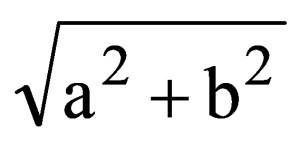Question
Question: a \> b \> 0 and f(q) =\(\frac { \left( a ^ { 2 } - b ^ { 2 } \right) \cos \theta } { a - b \sin \the...
a > b > 0 and f(q) =a−bsinθ(a2−b2)cosθ, then the maximum value of f(q) is
A

B
a2−b2
C
a – b
D
) a + b
Answer
a2−b2
Explanation
Solution
f(q) = a−bsinθ(a2−b2)cosθ= 
f(q) = h(θ)a2−b2 , h(q) = a sec q – b tan q
f(q) is maximum and minimum according as h(q) is min. or max. respectively
h(q) = a sec q – b tan q
h'(q) = a sec q tan q – b sec2 q
for max. and min. of h(q) put h'(q) = 0
sec q (a tan q – b sec q) = 0
sin q = b/a .........(1) as [sec q ¹ 0]
h"(q) = sec q tan q (a tanq – b secq)
+ (a sec2q – b secq tan q) secq
= a sec3q + a sec q tan2q – 2b sec2q tan q
h"q = cos3θa+asin2θ−2bsinθ
= cos3θa+ab2/a2−2b⋅b/a
= acos3θa2−b2 > 0
{sinθ=b/aa>b>0 and sinθ=ab is +ve
So, h(q) is minimum when sin q = 
f(q) is maximum when sin q = ab
max. f(q) = 
Ž (a2−b2)(a2−b2)(a2−b2)
max. f(q) = a2−b2
